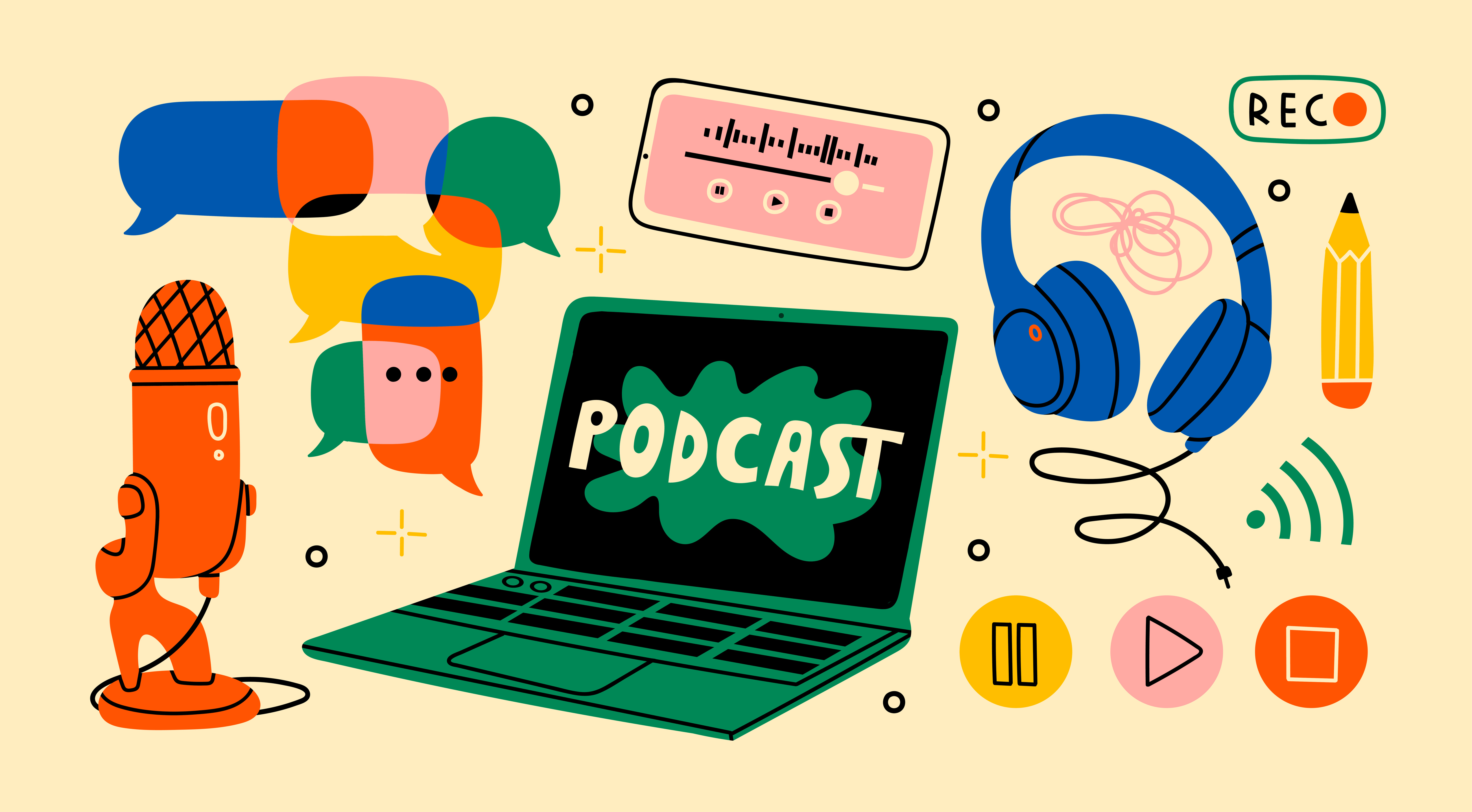Podcast Production
Podcasts are a popular format for sharing and consuming content about nearly any topic. Their flexibility in length, series duration and publishing frequency, content, and style makes podcasts an invaluable tool for education. Instructors can provide lessons or review materials, “special features” or cultural highlights, discuss news or research, or highlight promote outreach or other opportunities. Students can be engaged in podcasting as a means to hone writing, speaking, research, and other skills
At IU, numerous language programs are incorporating podcasting into their coursework and enrichment. CeLT is pleased to provide both self-service and full-service recording/editing facilities for podcasts (and other multimedia) for language instructors and researchers at IU. Others within the College of Arts and Sciences may also request our services, with requests evaluated on a case-by-case basis.
CeLT is also available to consult on best practices, how to establish your own podcasting setup, and other topics. Some basic information is provided below, for quick reference.
Resources at IU
Dedicated recording spaces at IU include CeLT’s studio, the Academic Media Production Spaces, and some departmentally-operated studios.
All IU affiliates have access to the Adobe Creative Cloud software suite, including Adobe Audition (audio editing software). This software may be used at any campus computer lab, downloaded to your personal devices, or accessed through IUanyWare. UITS offers free self-paced audio/video production training, for those who wish to learn more about using Audition and other Adobe software.
There are several resources for borrowing recording equipment (such as microphones and headsets), including from CeLT, the Wells Library Makerspace, and the Music Library.
In the greater Bloomington community, the Monroe County Public Library provides excellent self-service media production spaces with a range of equipment and software, as well as detailed instructions and other resources for learning about the tools. IU students are eligible for a library card at the MCPL even if their permanent residences are outside of the county.
Podcasting Basics: Planning
A good podcast begins with a well-developed plan. Consider these points as you prepare:
- What will be the overall topic for your podcast series?
- Who is your audience?
- Who is the podcast host?
- Will there be guests? Do you expect your guests to be local or recording remotely?
- Where and how will you record and edit?
- Will you have a standard intro/outro (perhaps with music) to tie the series together?
- Where will you share the podcast and how frequently?
Podcasting Basics: Equipment
Technical setups for podcasting can be created on nearly any budget. CeLT recommends that beginning podcasters borrow or purchase the basics (or record in an existing studio), and then expand or upgrade over time as needed.
Essential components for podcasting:
- A high-quality microphone for yourself (and another for guests if you plan on having in-person interviews)
- A USB microphone is an excellent choice for most podcasters due to ease of use, connectivity, and price
- A standard XLR microphone and a computer audio interface are another option, but may add another layer of complexity
- A mixer or multi-input audio interface is not necessary when expecting only one speaker at a time or if guests will be solely remote
- A method of recording and editing
- Generally a computer and recording software such as Adobe Audition (free for IU affiliates) or Audacity (free for everyone)
- An appropriate location for setting up your “studio” that is quiet
- Headphones or speakers for listening to your recordings during editing
- A plan for connecting with and recording guests for interviews that are not in-person, if applicable
- A plan for publishing your podcast
There are a number of open-use audio libraries online where you can find music, sound effects, etc., for use in podcasts with few or no copyright-related restrictions. Some collections CeLT uses frequently are the "YouTube Audio Library" (Google it.) and Pixabay.


